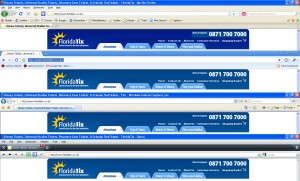It’s finally happened, Steve’s stepped down. Immediately triggering articles and tweets from Apple haters and fanboys.
Over the last few hours I’ve seen his role in the history of computing overstated, underplayed, or just simply misunderstood.
I’ve seen Apple innovations downplayed because they didn’t “invent” some of the technologies they are associated with, specifically the GUI and the mouse. True, they didn’t invent them. Apple didn’t invent the phone either, and Bill Gates has been talking about tablet computing for years. What Steve Jobs has is vision and an understanding of how people want to interact with technology. Jobs is able to see a prototype piece of technology and understand how it can change the industry. To steal a phrase from Anthony Painter – “Jobs has always been a master at connecting research to market.” He’s revolutionised our idea of what well-established technology should do and how we should interact with it.
Apple will be OK for the next few iterations of iPhone and iPad and the inevitable articles that judge Tim Cook by the next couple of products fail to grasp the problem. The problems for the new CEO are about vision. How is the industry changing and how does Apple shape and dictate that change?
Some have compared Jobs to Henry Ford and while others are more qualified than myself to compare the two, I think the difference is that Henry Ford changed the way a product was manufactured to generate huge volume at a significantly reduced cost.
Michael Dell and Bill Gates seem a better comparison to Henry Ford. Windows drove the costs down by enabling hardware manufacturers to compete with each other on price without worrying about a lack of software. Dell could slash costs by cutting out the need for brick and mortar stores, direct marketing and buy on the phone or online. The problems for Dell, Microsoft and Ford came when the product was ubiquitous, people had moved beyond just wanting a car or a computer- they now wanted style.
“Any customer can have a car painted any colour he wants so long as it is black.” – Henry Ford
Microsoft have only recently woken up to the fact that people want more than just functionality. It has to be a joy to use. When the iPhone was announced, Steve Ballmer appeared in a video demonstrating exactly how little he understood this change. He laughed at it.
“The most expensive phone in the world.”
“It won’t appeal to business customers because it doesn’t have a keyboard.”
Referring specifically to the Windows powered Motorola Q he started ticking boxes: “It’ll do music, it’ll do Internet, it’ll do email, it’ll do instant messaging.” Box ticking functionality. Nothing about the way people want to interact with technology. “Right now, we’re selling millions and millions and millions and millions of phones a year. Apple is selling zero phones a year”
This is the phone Ballmer thought could compete with the iPhone. They still wanted to compete on features, and were unprepared to go beyond that. Dell and Microsoft achieved the Ford style ubiquity but struggled to find answers to a new set of problems.





